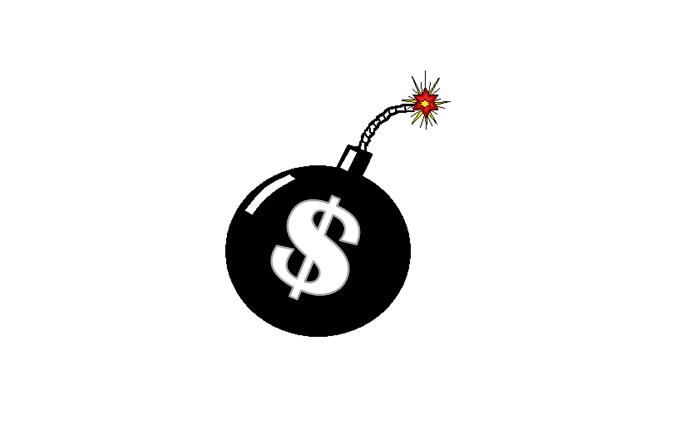
Interest rates on the $30 trillion national debt are rising much faster than expected this year, according to the latest data from the U.S. Treasury.
10-year treasuries are up to about 3.2 percent in 2022 so far as bond markets continue responding to the recent bout of inflation, which crept upward to 8.6 percent in May.
That is already more than a percentage point of interest greater than the White House Office of Management and Budget (OMB) expected this year. In February, OMB estimated 10-year treasuries interest rates would average at 2.1 percent.
This means interest owed on the debt is going to increase as well.
About $6.89 trillion of the $23.8 trillion of publicly held debt, about 29 percent, is coming due in the next year, according to the latest data from the U.S. Treasury.
Meaning, for every increased percentage point of interest owed on the debt, U.S. taxpayers will owe an extra $69 billion, largely a function of short-term lending rates rising amid the Federal Reserve’s current interest rate hikes.
If the Fed were to suddenly hike interest rates on the short end of the yield curve to match inflation, as it has in the past, interest owed on the debt would skyrocket. For example, if the Federal Funds Rate were to suddenly rise to 8.6 percent, pulling U.S. treasuries rates with it, gross interest owed on the debt, currently projected by OMB to be $560 billion in 2022, would increase by $447 billion to more than $1 trillion.
Suffice to say, such an interest rate shock in the U.S. would be felt around the world, triggering a massive recession.
For anyone looking for a potential reason why the Federal Reserve still seems reluctant to raise the Federal Funds Rate — now at 1.5 percent to 1.75 percent — to keep pace with inflation, look no further.
And yet, by what other method could the Fed sop up all the additional dollars that were created by Congress and the Trump and Biden administrations to counteract the Covid lockdowns?
Congress spent and borrowed more than $6 trillion to fight Covid after Jan. 2020: the $2.2 trillion CARES Act and the $900 billion phase four legislation under former President Donald Trump, and the $1.9 trillion stimulus and $550 billion of new infrastructure spending under President Joe Biden.
As a result, the national debt has increased by $7.2 trillion to $30.4 trillion since Jan. 2020, of which the Fed monetized half, or $3.4 trillion, by increasing its share of U.S. treasuries to a record $5.7 trillion while the M2 money supply has increased by $6.3 trillion to $21.8 trillion, a 41 percent increase, since Jan. 2020.
When was the Fed planning to soak all those extra dollars up?
This has all happened before. After continued bouts of inflation (exacerbated by Federal Reserve accommodation of massive budget deficits) in the 1970s, eventually, in the 1980s, the Fed raised its benchmark interest rate to double digits to vacuum up all of the extra dollars from banks, peaking at more than 19 percent in 1981.
The worst part is, the longer the Fed waits to really hike rates up to combat the inflation and the longer the global supply crisis and the war in Europe takes to resolve itself — will we ever meet demand? — the greater the risk that the inflation will continue to spiral out of control.
As the steward of the world’s reserve currency, confidence in the U.S. dollar will surely be tested over the coming months and years, along with the currency’s “exorbitant privilege,” the merits of which will be judged like every other currency, by the relative price stability it fostered. To keep that privilege, eventually, the U.S. economy will have to take its medicine. Stay tuned.
Robert Romano is the Vice President of Public Policy at Americans for Limited Government Foundation.






